Trip overview
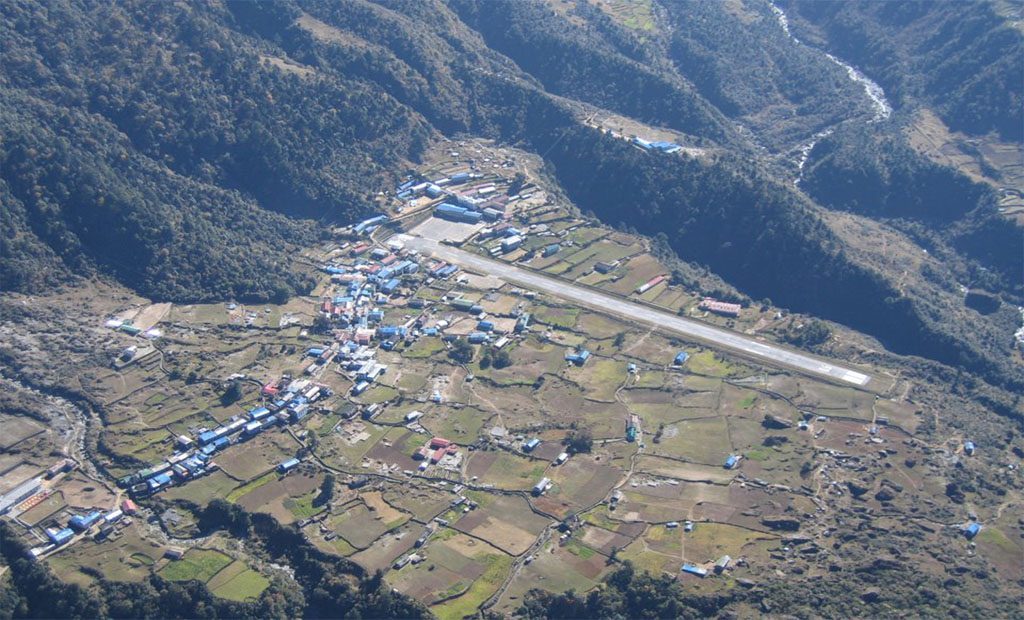
lukla ariport
Overview: Everest View 12-Day Trek
Arrival and Ascent to Namche Bazaar: The Everest view trek is begins with a thrilling flight to Lukla, the gateway to Khumbu. As the journey progresses, the trek ascends through Sherpa villages, gradually crossing suspension bridges and following the Dudh Koshi River. As the landscape transforms, lush forests give way to alpine terrain. This transition reveals breathtaking views of snow-capped peaks. Namche Bazaar offers a perfect stop for acclimatization. It features vibrant markets and stunning mountain views.: The trail leads to Tengboche Monastery, a spiritual hub with stunning panoramas of Everest, Lhotse, Nuptse, and Ama Dablam. A highlight is the Everest View Hotel, offering spectacular close-up views of the world’s highest peak.
Cultural Immersion and Natural Beauty:
Trekkers experience Sherpa hospitality and traditions while exploring Sagarmatha National Park, a UNESCO World Heritage Site. The trek’s shorter duration makes it accessible while showcasing the region’s grandeur.
Key Highlights: Views of Everest in Panorama: From a variety of vantage points, take in breathtaking views of Mt. Everest (8,848 m), Lhotse (8,516 m), Ama Dablam (6,812 m), Thamserku (6,608 m), Kongde Ri (6,187 m). Namche Bazaar (3,440 m): Experience the vibrant atmosphere of this bustling Sherpa town, where you can explore museums, savor treats at local bakeries, and take in the first breathtaking views of Everest. Moreover, use this time to acclimatize and immerse yourself in the unique culture and hospitality of the region. Everest View Hotel (3,880 m): One of the highest luxury hotels in the world, offering a perfect spot for a cup of tea with mesmerizing Everest views.
Khumjung & Khunde Villages (3,790 m)
Visit the famous Hillary School and Khunde Hospital, built by Sir Edmund Hillary, and explore the Sherpa culture. Sagarmatha National Park (UNESCO World Heritage Site): Walk through rhododendron and pine forests rich in Himalayan flora and fauna, including Himalayan tahr, musk deer, and colorful pheasants.
Sherpa Culture & Hospitality
Experience warm Sherpa hospitality, visit monasteries, and learn about their traditions and mountaineering history. Short & Moderate Trek: Ideal for beginners, families, and those with limited time, offering a rewarding Himalayan experience without extreme altitude challenges. Trekking routes: The Everest View Trek (Lukla to Tengboche and back to Namche). This trek offers breathtaking views of Everest, Ama Dablam, Lhotse, and Nuptse while allowing for cultural immersion in the Sherpa heartland.
Diverse landscapes:
The Everest Views Trek (10 Days) is a fantastic short trek. It offers breathtaking views of Mount Everest and surrounding Himalayan peaks. Trekkers also explore the diverse landscapes of the Khumbu region. This trek is ideal for those who want to enjoy Everest’s beauty without the physical demands of reaching Base Camp
Sagarmatha National Park:
Sagarmatha National Park is a UNESCO World Heritage Site located in northeastern Nepal, covering an area of 1,148 square kilometers in the Solukhumbu district. The park is home to Mount Everest (Sagarmatha), the world’s highest peak at 8,848.86 meters (29,031.7 feet), and attracts visitors with its stunning landscapes, high-altitude ecosystems, and rich Sherpa culture.
Geography & Climate:
The park ranges in altitude from 2,845 meters (9,334 feet) at Monjo to the summit of Everest. It features rugged terrain, deep gorges, glaciers, and high mountain peaks. The climate varies with altitude, from temperate forests at lower elevations to alpine tundra and icy wilderness above 5,500 meters.
Flora & Fauna
Flora: In the lower regions of the park, you will first encounter lush forests of rhododendron, birch, juniper, and fir. As you ascend to higher elevations, however, the vegetation gradually gives way to alpine meadows and eventually to barren, rocky landscapes.
Fauna: In addition to its rich plant life, Sagarmatha National Park also shelters a variety of rare wildlife. Notably, it is home to elusive species such as the snow leopard, red panda, Himalayan tahr, musk deer, and the vibrant Himalayan monal—Nepal’s national bird
Culture & People
The Sherpa people, famous for their mountaineering skills and rich Buddhist culture, inhabit the park.. Visitors can explore Tengboche Monastery, the region’s spiritual center, and witness Buddhist traditions intertwined with mountain life.
How to Get There: Most visitors fly to Lukla from Kathmandu and start trekking from there. Alternative routes include trekking from Jiri or Phaplu for a longer, scenic approach.
Food & Accommodation
Breakfast: porridge, Tibetan bread, chapati, pancakes, eggs, tea/coffee. Lunch & Dinner: Dal Bhat (rice, lentil soup, vegetables), noodles, momo (dumplings), fried rice, pasta, pizza, soups. Beverages: tea, coffee, soft drinks, and bottled water (boiled water available for refilling).
Accommodation: Kathmandu: Standard 3-star hotel with breakfast included. Trekking Lodges (Tea Houses): Simple but comfortable rooms with twin-sharing beds, blankets, and shared bathrooms (private rooms may be available at extra cost). Namche Bazaar & Tengboche: Higher-end lodges with better facilities are available at an additional cost.
About Tengboche Buddhist Monestary
Tengboche Monastery (Thyangboche Monastery) is one of the most significant and beautiful monasteries in Nepal. Located at an altitude of 3,867 meters (12,687 feet) in the Khumbu region, it is the largest and most important monastery in the Everest region.
Key Highlights:
Tengboche Monastery:
Spiritual Significance: It follows the Tibetan Buddhist (Nyingma sect) tradition. It is a major religious center for the Sherpa community. The monastery hosts the Mani Rimdu Festival, a famous Buddhist celebration held every year in October or November. History: Founded in 1916 by Lama Gulu. The Tengboche Monastery, a jewel of the Khumbu region, has faced its share of adversity, yet its resilience is a testament to its enduring significance.
Despite this restoration, another major setback struck in 1989, when a fire swept through the monastery, causing extensive damage and threatening its very existence. Nevertheless, the resilience of the local people, combined with the spiritual significance of the monastery, prevailed—leading to yet another remarkable recovery. With generous support from international donors and the dedication of local artisans, a meticulous restoration project was launched. As a result, the monastery was carefully rebuilt once again, ensuring its legacy would endure for generations to come.
In essence, the story of Tengboche Monastery is one of perseverance. Indeed, through earthquakes and fires, it has been reborn—symbolizing the enduring strength of faith and cultural heritage. Ultimately, each restoration has not only revived the physical structure but also reinforced the monastery’s role as a vital spiritual center and a cherished landmark in the Himalayan landscape.
The best season
The best time to trek the Everest View Trek (10 days) is during spring (March–May) and autumn (September–November). These seasons offer the best weather, clear mountain views, and comfortable trekking conditions.
Spring (March–May): Weather: Mild temperatures and stable conditions. Views: Clear skies with vibrant rhododendron blooms. Crowds: Moderate—popular season but less crowded than Everest Base Camp.
Autumn (September–November): Weather: Crisp air, stable weather, and ideal trekking conditions. Views: Crystal-clear skies and breathtaking Himalayan panoramas. Crowds: High season with more trekkers on the trail.
Off-Season Considerations
Winter (December–February): Cold temperatures, possible snowfall, and fewer trekkers make this a quieter time to visit. However, the skies remain clear, providing breathtaking views. Nonetheless, the chilly weather requires proper layering to stay warm and comfortable.
Monsoon (June–August): This season brings heavy rains, cloudy skies, and slippery trails, making trekking more challenging. Consequently, visibility is reduced, and paths become more difficult to navigate.
For the best experience, plan the trek in April–May or October–November. These months offer ideal weather, making the adventure more enjoyable and rewarding.
Side trip of Everest region:
The Everest region offers several side trips to complement your main trek, whether it’s Everest Base Camp (EBC), Gokyo Lakes, Everest View Trek, or Three Passes Trek. Here are some top side trips to enhance your experience:
1. Everest View Hotel (From Namche Bazaar)
Duration: Half-day (1-2 hours’ hike)
Highlights: One of the best viewpoints of Everest, Lhotse, Ama Dablam, and Thamserku. Enjoy a coffee or tea with the view.
Best for: Short treks like Everest View Trek or first acclimatization day of EBC Trek.
2, Khumjung & Khunde Village (From Namche Bazaar)
Duration: Half-day (3-4 hours)
Highlights: Visit Khumjung Monastery, which houses the legendary “Yeti Scalp,” and explore Kunde Hospital, built by Sir Edmund Hillary.
Best for: Cultural exploration and acclimatization hikes.
3,Thame Village & Monastery (From Namche Bazaar):
Duration: Full-day trip (or an overnight stay)
<strong>Highlights: A less crowded Sherpa village with stunning scenery, a historic monastery, and a chance to see the traditional lifestyle of Everest climbers.
Best for: Those interested in Sherpa culture and remote village experiences.Tengboche Monastery (Optional Extra Day Stay)
Duration: 1 extra night in Tengboche
Highlights: The most famous monastery in the Everest region, with an iconic backdrop of Ama Dablam.
Best for: Those seeking a spiritual experience and breathtaking sunrise views.
4,Ama Dablam Base Camp (From Pangboche):
Duration: Full-day hike (5-7 hours’ round trip)
Highlights: Spectacular close-up views of Ama Dablam (6,812m), fewer crowds, and a true mountaineering feel.
Best for: Adventurers wanting a less-traveled scenic side trip.
5 , Phortse Village (Alternative to Tengboche)
Duration: 1 extra day (alternative route to EBC)
Highlights: A peaceful Sherpa village with fewer trekkers, stunning valley views, and a high chance of spotting Himalayan wildlife like musk deer and pheasants.
Best for travelers seeking to avoid the crowded Tengboche route while still immersing themselves in authentic Sherpa culture
7, Gokyo Lakes & Gokyo Ri (Side Trip from EBC Trek)
Duration: 3-4 extra days Highlights: Explore the stunning turquoise Gokyo Lakes, hike up Gokyo Ri (5,357m) for one of the best Everest views, and cross Cho La Pass (5,420m) if connecting to EBC.
Best for: A scenic alternative to the classic EBC trek.
8,Chhukung & Chhukung Ri (From Dingboche)
Duration: 1 extra day
Highlights: A spectacular day hike to Chhukung Ri (5,546m) with 360-degree views of Makalu, Lhotse, and Ama Dablam.
Best for: Acclimatization and panoramic Himalayan views.
9,Island Peak Base Camp (From Chhukung)
Duration: 1-2 extra days
Highlights: Visit the base camp of Island Peak (6,189m), one of the most climbed trekking peaks in Nepal.
Best for: Trekkers who want a taste of mountaineering.
10, Renjo La Pass (From Gokyo)
Duration: 1 extra day
Highlights: One of the most scenic passes in the Everest region, offering breathtaking views of Everest, Cho Oyu, and Makalu.
Best for: Those seeking adventure and a quieter trekking experience.
Spiritual Significance and Cultural Traditions
Tengboche Monastery follows the Nyingma school of Tibetan Buddhism, the oldest tradition of Tibetan Buddhism. It is home to around 60 monks who dedicate their lives to prayer, meditation, and spiritual teachings. One of the monastery’s most vibrant events is the annual Mani Rimdu Festival, held in October or November, featuring elaborate masked dances and religious rituals. In addition, the monastery plays a key role in blessing climbers before they attempt Mount Everest, offering a profound spiritual send-off.
A Sacred Destination on the Everest Trail
Today, Tengboche Monastery remains a cultural gem along the Everest Base Camp and Everest View Treks. It continues to serve as a sacred sanctuary for the Sherpa people while welcoming thousands of trekkers and pilgrims each year.
The cost for Everest views trek 10 days.
The Everest View Trek package includes three daily meals, comfortable accommodation, and unlimited tea and coffee. It also includes experienced guides, reliable porters, and their insurance. This all-inclusive service is designed to offer trekkers maximum convenience, comfort, and peace of mind.
By the trek’s end, trekkers will feel accomplished, having seen Himalayan views, experienced Sherpa culture, and made lasting memories. Alternatively, for those seeking a longer adventure in the Khumbu region, the Everest Base Camp trek offers a more immersive experience compared to the Everest View Trek. Furthermore, the Everest region boasts a wide variety of trekking routes, catering to different interests and skill levels.These cater to different interests, fitness levels, and available timeframes.
1, Renjo-la pass Gokyo trek
2, Renjo-la, chola, EBC trek
3,Gokyo Fifth lake trek
3, Chukung-Ri EBC trek
4, Island peak climbing
5,Amadablm base camp trek
6, Everest Base camp trek
7, Everest Heli Trek 12 days
8, Himalayan cultural tour 9 days
conclusion
Ideal for those seeking a shorter adventure, this trek offers the grandeur of the Everest region and leaves you with lasting memories and a deeper connection to the Himalayas.
Useful Info
Best Time to Trek: Pre-monsoon (March–May) and post-monsoon (September–November) are the best seasons for clear skies, stable weather, and optimal trekking conditions.
Winter (December–February) can be very cold, while monsoon (June–August) brings heavy rain and cloud cover.
Fitness and Difficulty: The trek is relatively moderate, but some experience with trekking is beneficial. The highest point on the trek is around 3,880 meters (Everest View Hotel), so altitude sickness is a possibility, but proper acclimatization in Namche Bazaar will help.
Daily trekking involves 4–7 hours of walking with some ascents and descents, making it suitable for trekkers with average fitness levels.
Acclimatization: The trek includes acclimatization days in Namche Bazaar, allowing trekkers to adjust to the altitude, reducing the risk of altitude sickness. Drink plenty of water, avoid alcohol, and listen to your body during the trek.
Packing Essentials: Clothing: Layers are important. A good trekking jacket, thermal wear, gloves, a hat, and sturdy hiking boots are necessary. Don’t forget a rain jacket, even in the dry season, as weather can change quickly. Gear: trekking poles, sunglasses, sunscreen, a headlamp, a camera, and a first-aid kit. Water: Carry a water bottle and purification tablets or a filter, as clean water is available along the route, but it’s always safer to treat it.
Tea Houses and Lodging: Accommodation along the trek is mainly in tea houses, offering basic rooms with shared bathrooms. Booking ahead is recommended during peak seasons, but it is generally easy to find lodging along the route. Tea houses offer a warm and cozy place to rest, and you’ll be able to enjoy local foods like dal bhat (lentil soup), noodles, and Sherpa stew.
Food and Drink: The food along the trail is generally simple but nutritious. Dishes like dal bhat, mo:mo, and fried rice are popular. Don’t forget to hydrate; bottled water is available, but it’s better to carry your own water treatment method.
Local Culture and Customs: Sherpa culture is rich in Buddhist traditions. You’ll pass by monasteries and churches along the way. Respect local customs and be mindful of sacred sites.
Blessings are often given at monasteries, especially before embarking on expeditions to Everest.
Health and Safety: Keep some basic medicines (headache, cold, and stomach medications) in your first-aid kit. Ensure you’re physically prepared for the trek. If you’re unsure of your fitness level, it's a good idea to consult with your doctor before the trek.
Connectivity: Wi-Fi is available at most tea houses but can be slow and may require a small fee. Mobile signal is intermittent but available in some areas like Namche Bazaar and Tengboche.
Travel Insurance: Make sure you have comprehensive travel insurance that covers trekking at high altitudes (up to 4,000 meters), medical emergencies, and evacuation.
Permits: Sagarmatha National Park Entry Permit and TIMS (Trekkers’ Information Management System) Card are required for trekking in the Everest region. These can be obtained in Kathmandu or Lukla.
Transportation: The trek starts with a flight from Kathmandu to Lukla, one of the most thrilling flights in the world. Prepare for possible delays, as weather conditions in Lukla can be unpredictable. Return flight from Lukla to Kathmandu at the end of the trek.
Environmental Responsibility: Leave No Trace: Be conscious of your environmental footprint. Carry trash out of the mountains, and avoid using plastic bottles when possible. Respect Nature: Stick to designated trails and stay on marked paths to minimize impact on local wildlife and vegetation.
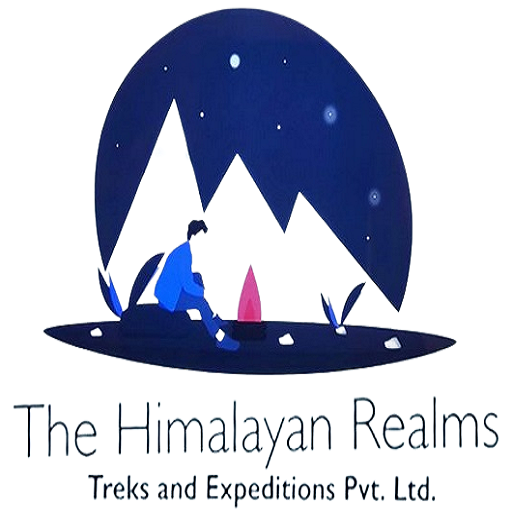


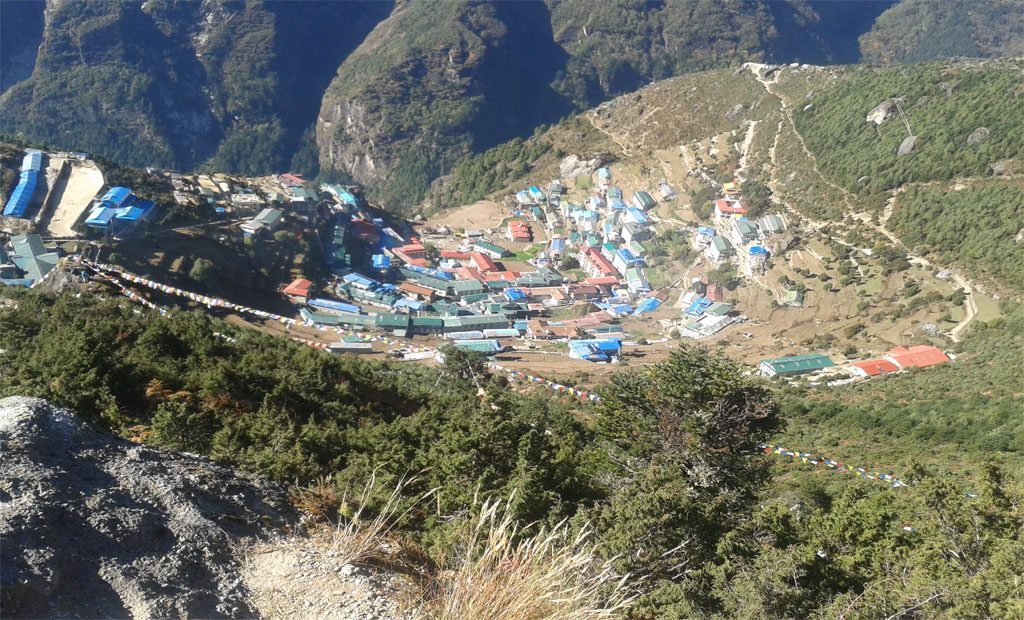

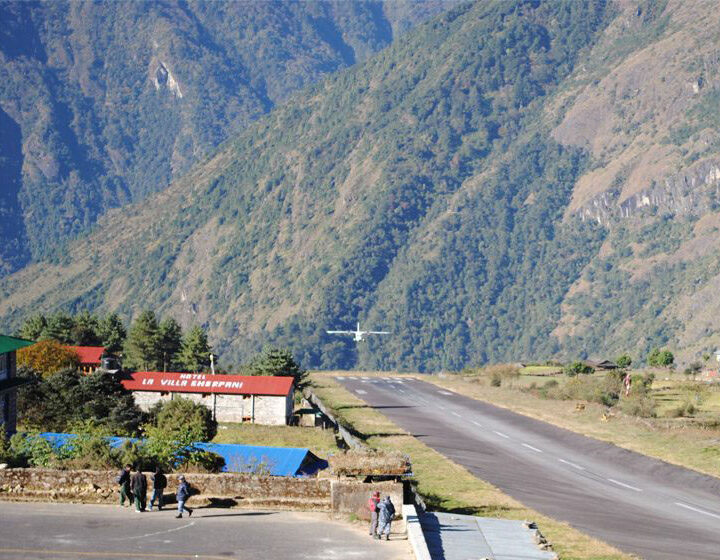
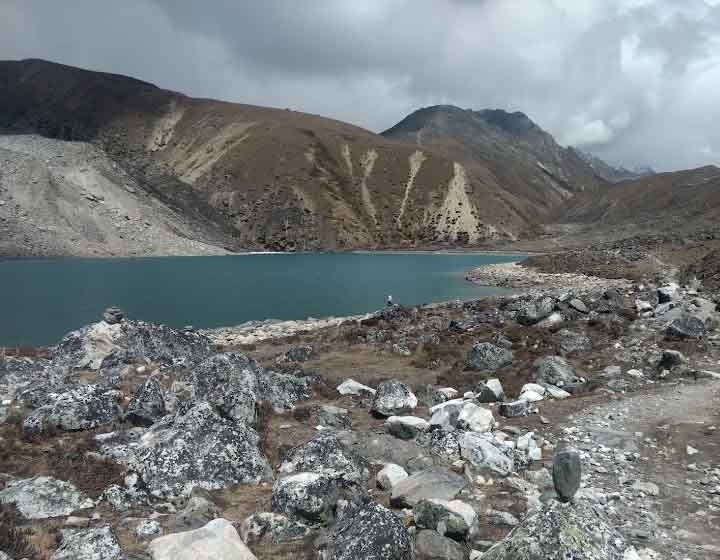
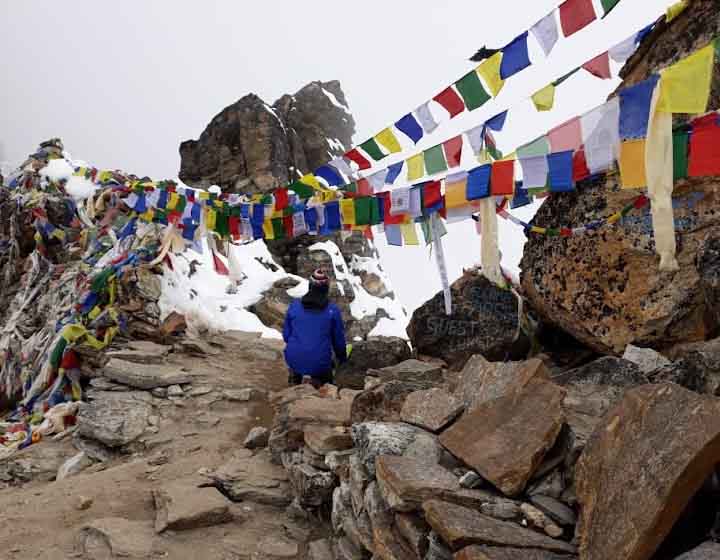
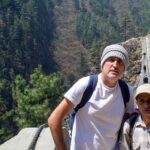
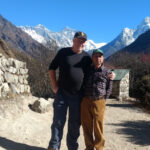
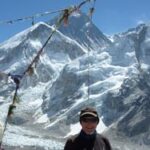




dammaru@2026
We were very lucky to choose you when we arrived in Kathmandu in April 2016.
knowing nothing about trekking, both Ram (Sherpa porter) and yourself guided and
cared for us during our trek to Namche Bazaar and the Everest Hotel, All of the
The teahouses that we stayed in were great! though cold at night, you were always there to
Give us extra blankets. your knowledge of the area and information on the various
mountains would be second to none.
On our recommendation our father Stuart trekked with you 2023; we knew that with
him being in his mid-70s that you would look after him from start to the end which
you did; he has raved so much about you and his trek that both him and Dave will be
heading up to Gokyo Ri during March 2026 with yourself and hopefully Ram.
Again, thanks again, and good luck with your business/website.
Paul & David Colkin
Paul & Kamal